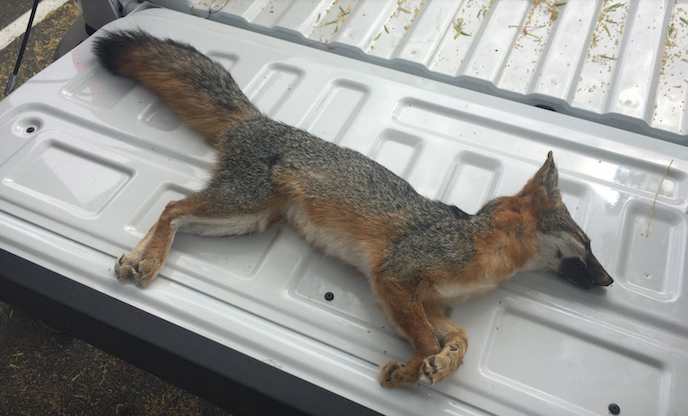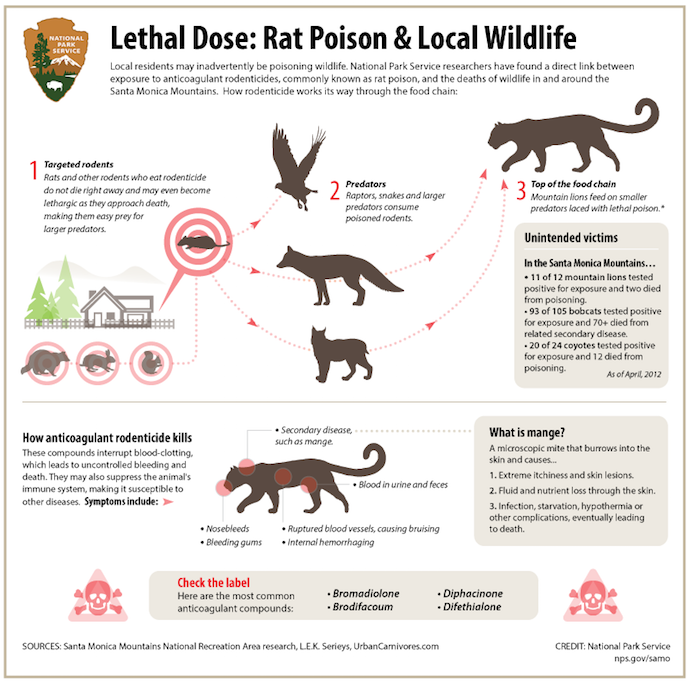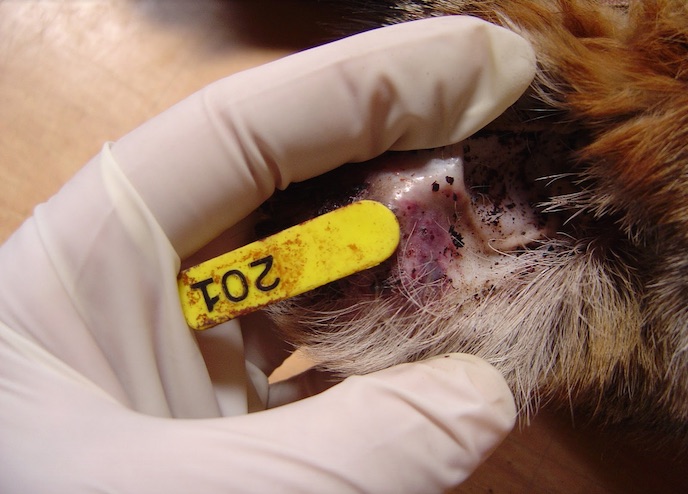[PDF]Lethal Dose: Rat Poison & Local Wildlife
Another Victim of Rat Poison?
September 17, 2015

A local resident discovered this gray fox and reported
it to our biologists. | Photo: National Park Service
When the National Park Service released an image that
showed the famous Griffith Park mountain lion known
as P-22 suffering from mange and disclosed that he
had been exposed to rat poison, biologists hoped the
unfortunate news would raise awareness about the
harmful impacts of common household poisons on
our local wildlife population.
This week’s report of a dead gray fox brought home
how far we have to go in educating the community
about the unintended impacts of using these products
around homes, parks, and businesses.
A local resident called on Monday to report the dead
animal, found on private land near Peter Strauss
Ranch in Agoura. Although the findings are still
preliminary, the necropsy indicated that the gray
fox likely died as a result of exposure to anticoagulant
rodenticide (this is the more formal term for the rat
poisons that use blood thinners to kill the animal).
The gray fox had internal bleeding and did not
have any signs of other trauma (such as injury
from a vehicle, other animal, etc.). Testing the
liver for poison residues will help confirm the
cause of death.
National Park Service researchers havebob
documented widespread exposure to anticoagulant
rodenticides since they began studying carnivores
in and around the Santa Monica Mountains in 1996.
The graphic below summarizes this research and

Despite the fact that we’ve only studied a limited
number of gray foxes, this is not the first time we’ve
documented the poisoning of a local gray fox. Back
in 2008, biologist Joanne Moriarty conducted a
necropsy on GF-29 (the “GF” stands for gray fox),
an animal she had first caught near Westlake Village.
In that case, the animal had such significant internal
bleeding that blood was actually coming out of its
ears and mouth (anticoagulants block the vitamin
K cycle, which is critical for allowing the body’s
blood to clot).

GF-29’s ear shows signs of external bleeding and
bruising. Anticoagulant rodenticides interfere with
blood clotting. | Photo: National Park Service
Although these photos and details can be disturbing (and
these are the sanitized photos that do not show blood
throughout the abdominal cavity and elsewhere), it’s
critical that the public understands the unintended
consequences of using these poisons.
So please share this blog post with others and learn
Although we think P-22 has recovered, it’s likely that
he continues to be exposed to poisons left out by
local residents and other property owners.
Let’s see what we can do to change that.
-------------------------------------------------------------------
-2013/poisons-used-kill-rodents-have-safer
Poisons Usedto Kill RodentsHave SaferAlternatives
A second generation of
ultra-potent rodenticides
creates a first-class crisis
for people, pets, and wildlife
 |

No comments:
Post a Comment